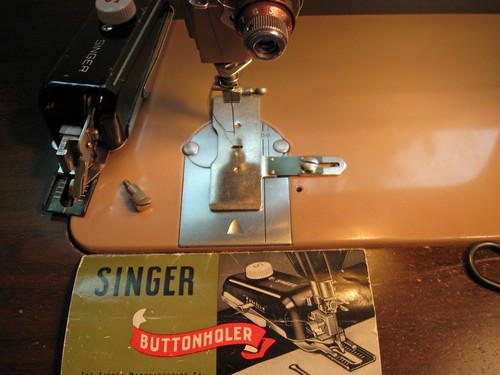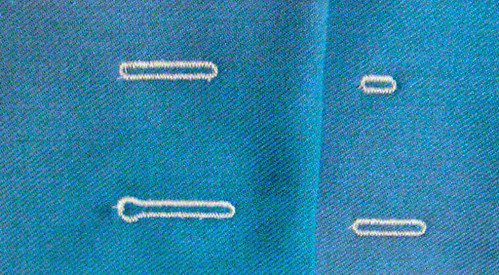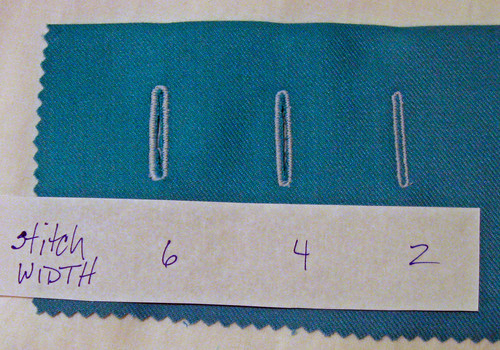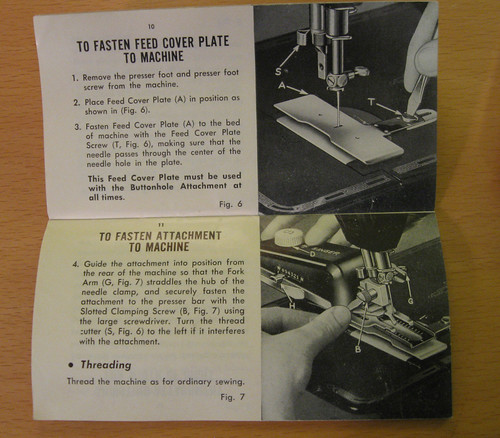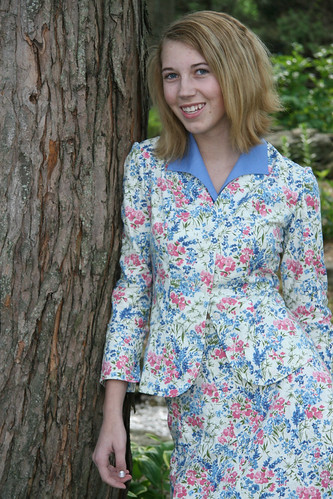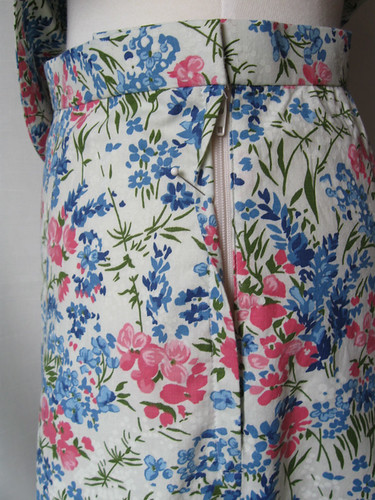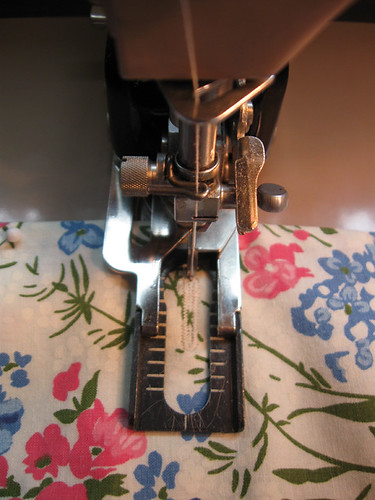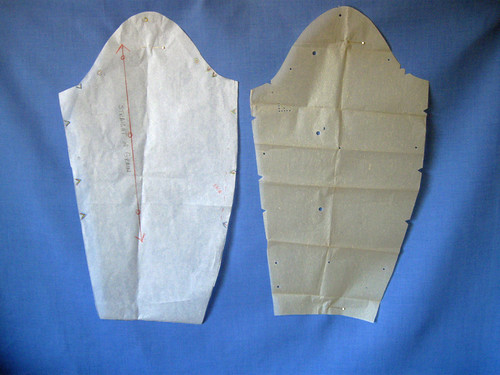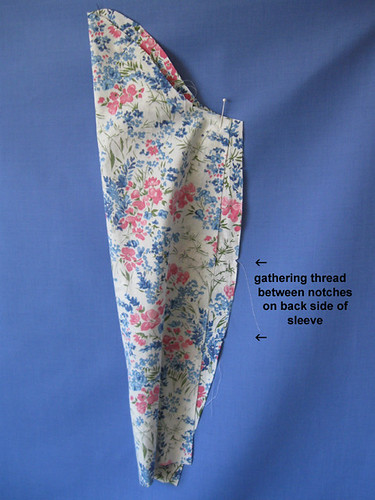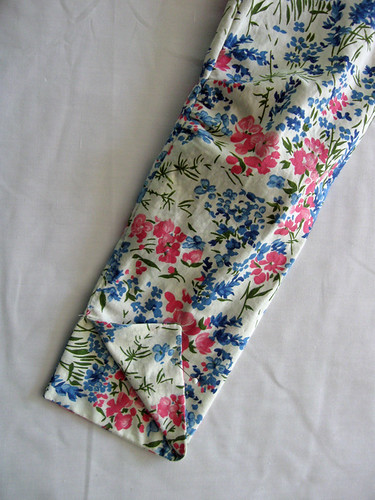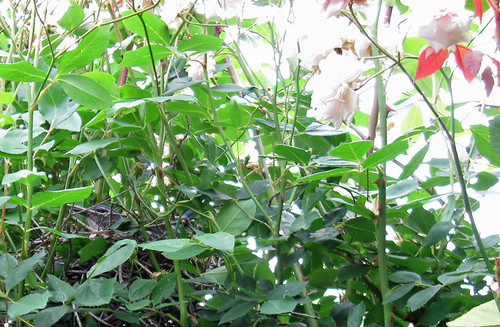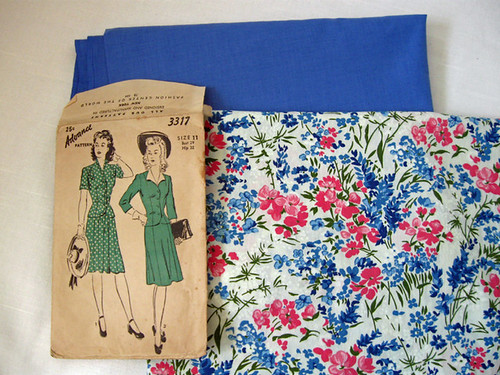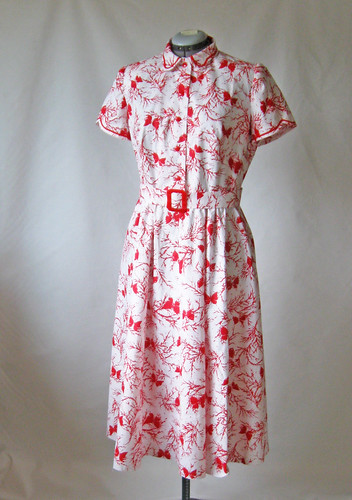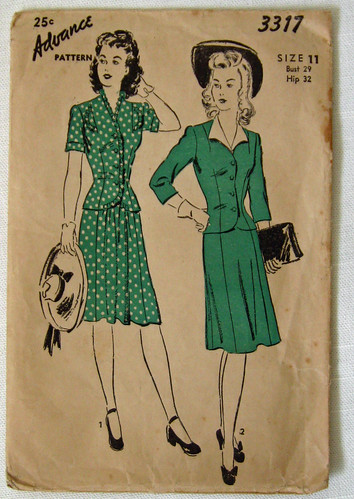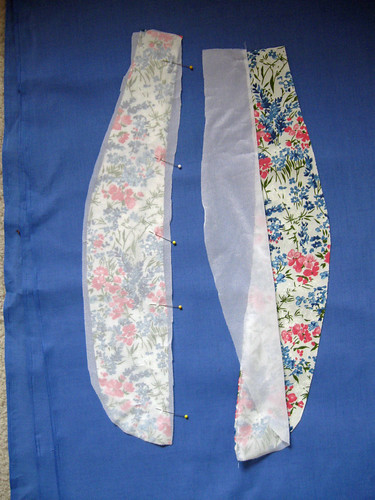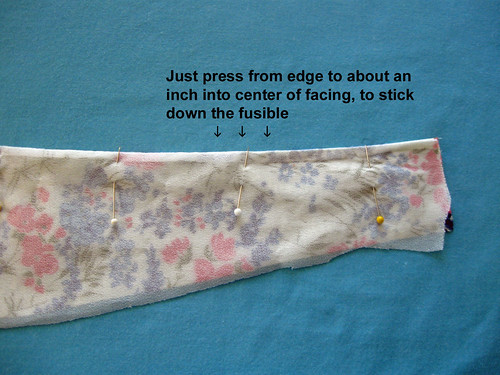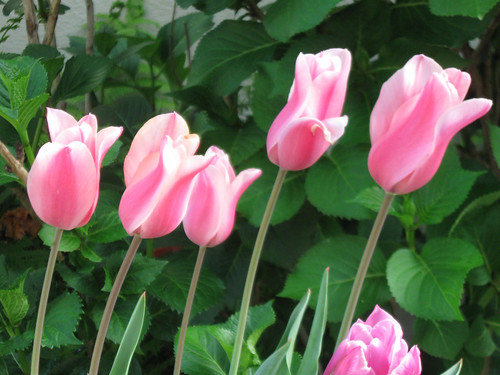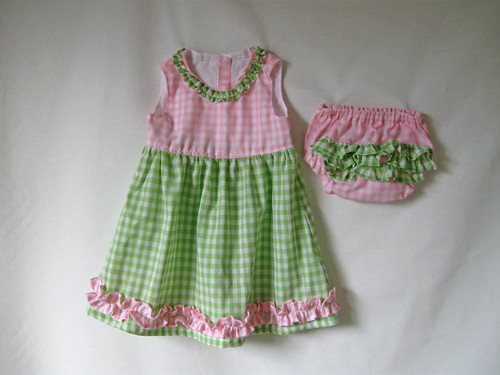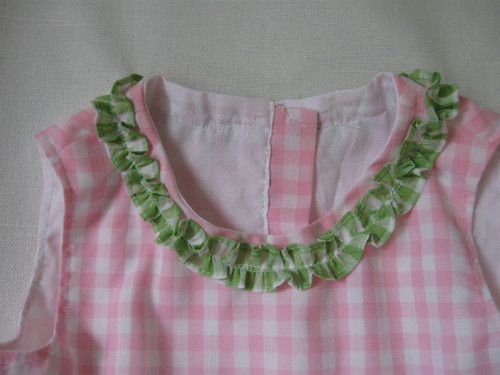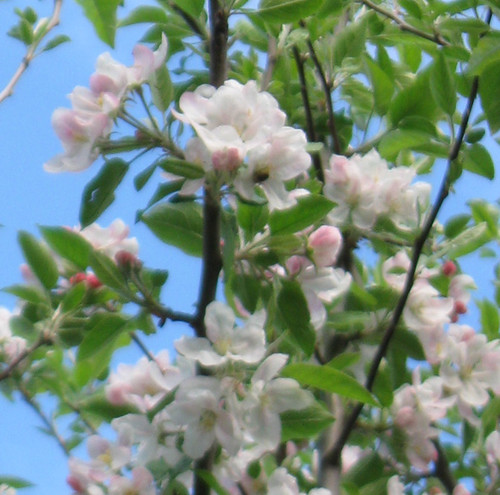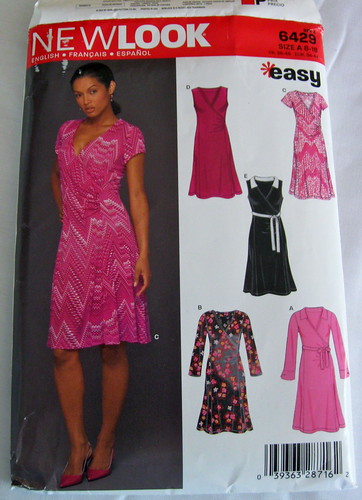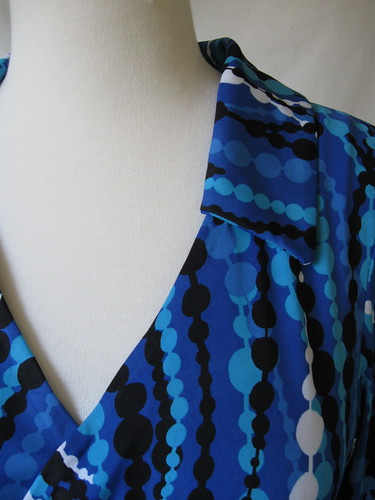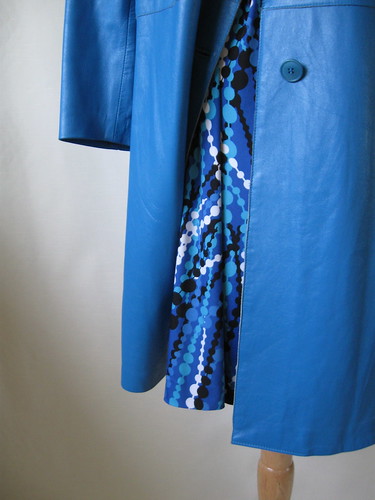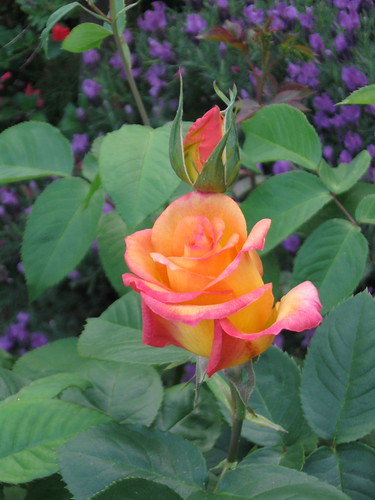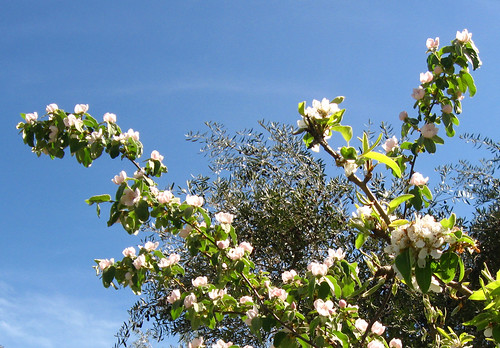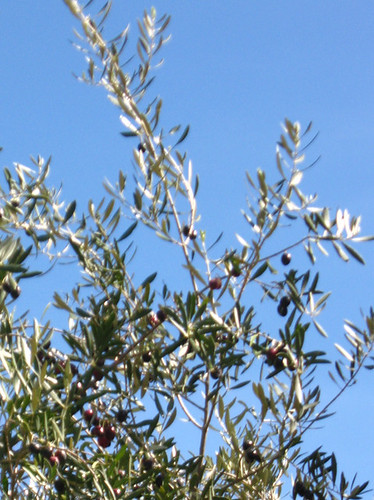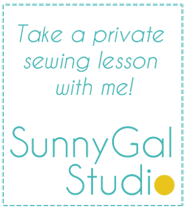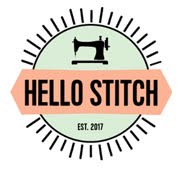 To get started, you need to choose the template based on the size of the button. The Singer attachment has 5 templates, but I only ever use 4 of them. Once in a great while I use the keyhole template, if I make a wool jacket that seems to call for that style, but otherwise I use the straight one for large buttons. Then the other sizes are good for coats, dresses and blouses. The tiny one is cute but very small - maybe for children's or doll's clothes.
To get started, you need to choose the template based on the size of the button. The Singer attachment has 5 templates, but I only ever use 4 of them. Once in a great while I use the keyhole template, if I make a wool jacket that seems to call for that style, but otherwise I use the straight one for large buttons. Then the other sizes are good for coats, dresses and blouses. The tiny one is cute but very small - maybe for children's or doll's clothes. The attachment is flipped over on its back, with the door open, so you can see where you drop in the template and the teeth of the buttonholer grab onto the template.
Here is the first page from the manual, the parts labeled with their technical names such as "bight adjuster" and "feed cover plate"
Back to the sewing machine. You remove the regular sewing foot, and the screw that holds it on. The buttonholer has its own screw, slightly different, used to attach it. The Feed Cover Plate has to be attached to the surface of the sewing machine, the screwdriver is pointing to the screw hole that is the correct one to use. I have mindlessly screwed it into the wrong one and then wondered what was wrong after I attached the buttonholer, so attention here.
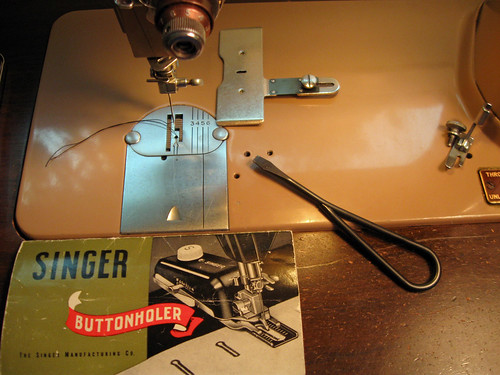
A little fiddling with the cover plate is important, as the needle must go through the very small hole and if it is off center it will hit the cover plate and break the needle, so check before proceeding.
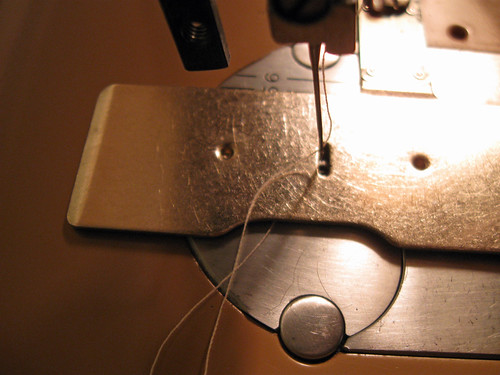
Here is a short (1 minute) video of the buttonhole attachment in action. It is a bit blurry - my first time trying to video and sew. Mostly I wanted to show the action of the attachment and how fast it is.
Wasn't that exciting ? OK, maybe not so much but imagine making a garment with 8 buttonholes, plenty of time for daydreaming or pattern planning while hypnotically watching that little gizmo go round and round.
Samples of the different buttonholes, made on a scrap of wool with no interfacing. I went around 2 times for each buttonhole.
You can also change the width of the stitch, rather like adjusting a zig-zag stitch. They call it "bight adjustment" in the instructions. Here is a sample using the different widths. This is useful depending on the type of fabric and size of buttonhole selected. I usually make a few test buttonholes on scraps to choose the right combination of size and stitch width.
The manual shows the attachment in place much better than photos I took so here is a look at that. I have learned to use all the Singer attachments from the manuals that came with them, they are incredibly detailed and yet easy to understand. Perhaps because I am an instruction reader - computers, power tools, tv and cable, photoshop, whatever it is I read the instructions before proceeding. If that isn't enough, I take after my dear old dad, go to the library and get a book, try to teach myself whatever is needed. So I strongly recommend these little instruction books that come with the Singer accessories. If anyone has an attachment but no instructions, I would be happy to photograph the rest of the pages and post it on my Flickr page.
Had enough about buttonholes? I was sorting through some past photos and saw that I took a whole series of pics while I was making my winter coat, so maybe a post on my methods for bound buttonholes. Also regarding these machine worked buttonholes, there are a few tips which occur to me and I have not mentioned here, so I will do another short post on those later this week.
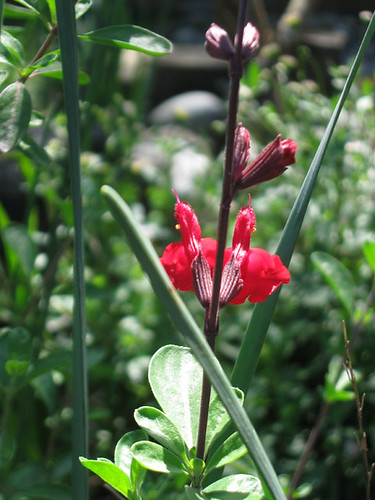 Today I really should get outside and plant the new stuff I purchased this weekend. Despite our weird late May rain here in N. California, I am trying to change a lot of my garden to low water usage plants. So here is one of them, a red salvia that the hummingbirds love.
Today I really should get outside and plant the new stuff I purchased this weekend. Despite our weird late May rain here in N. California, I am trying to change a lot of my garden to low water usage plants. So here is one of them, a red salvia that the hummingbirds love. 

